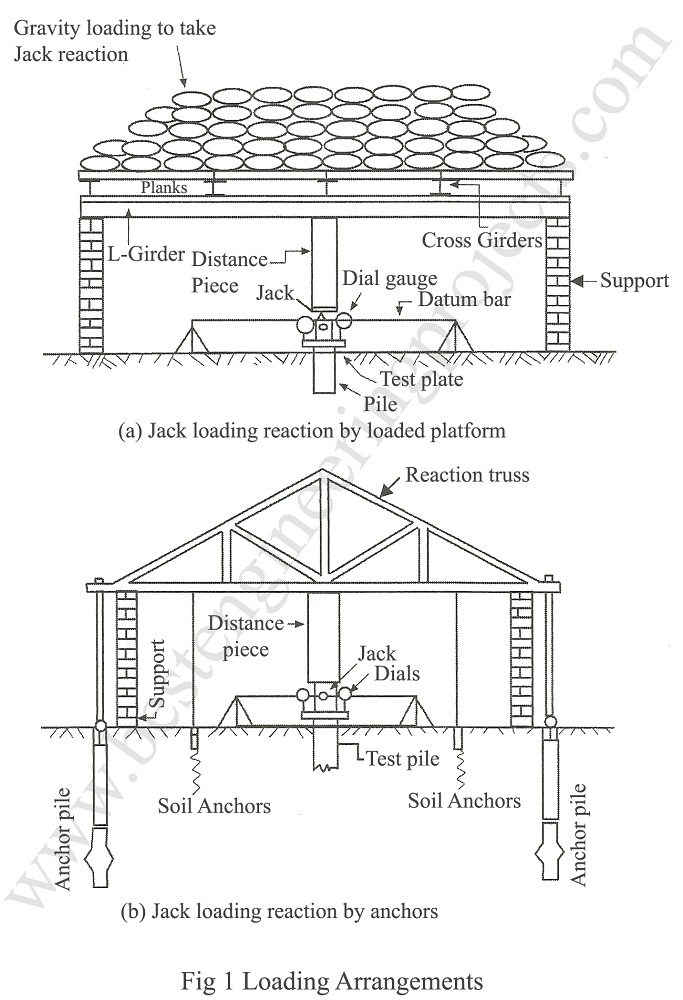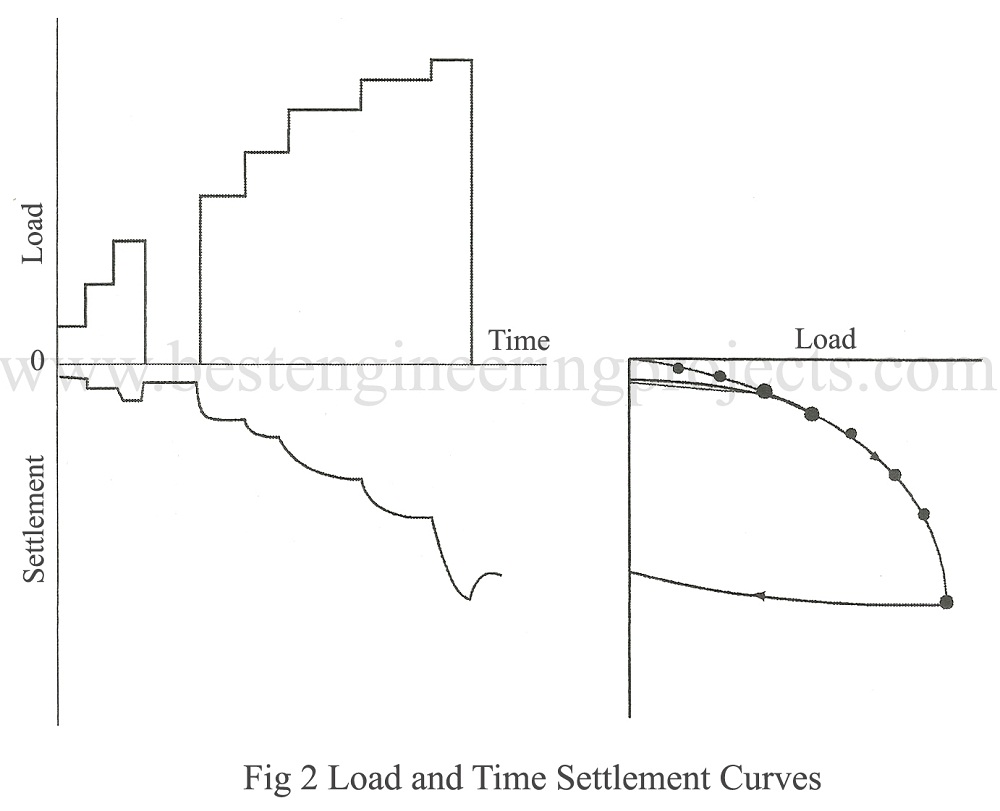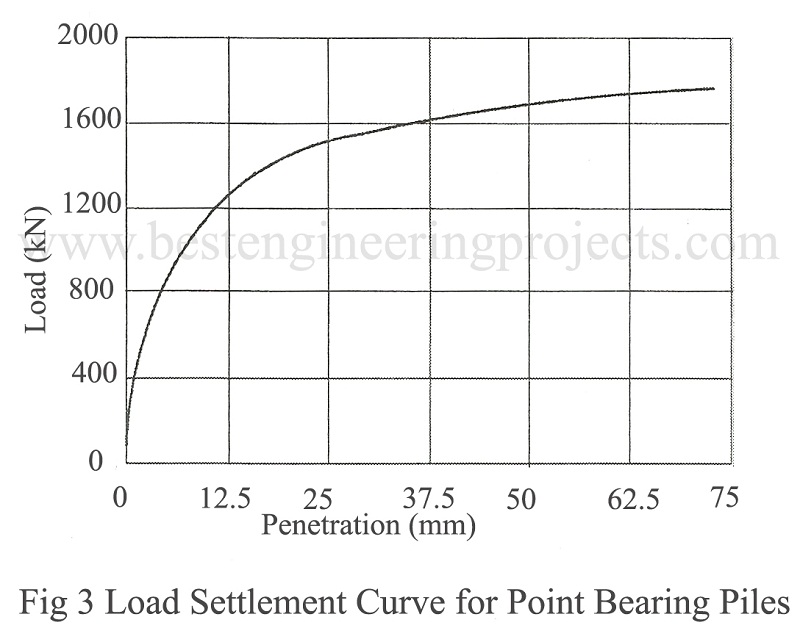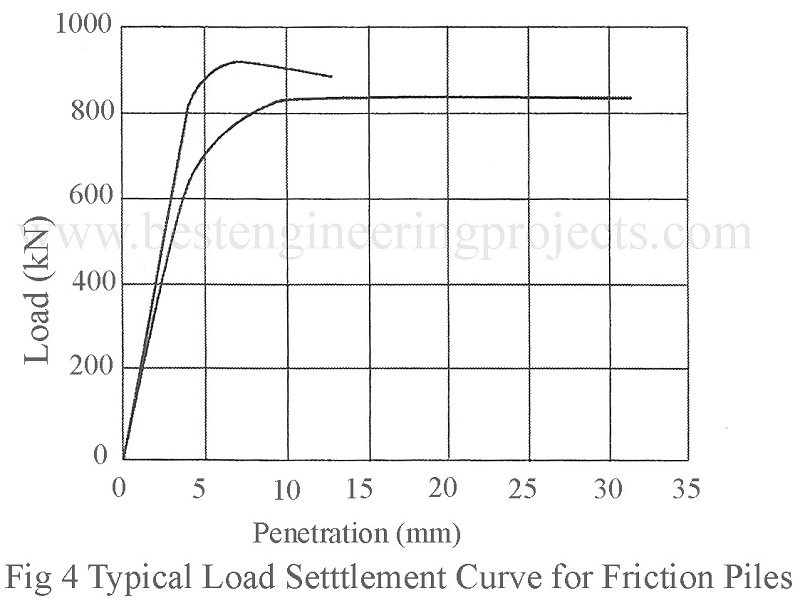The purpose of pile load test is:
- To determine settlement under working load
- To determine ultimate bearing capacity
- To ascertain as a proof of acceptability
Types of pile Load Test | Pile Load Test | Purpose of Pile Load Test
In general two types of pile load tests are conducted. They are:
- Initial Test
- Routine Test
The initial test is performed before the start of construction to assess the design adequacy. The routine test is performed on a working pile. This test is also known as work test. In initial test, the test load 5/2 times the working load in work test load is 3/2 times the design load.
Methods of Testing
There are two methods of testing piles. They include:
- Maintained Test
- Constant Rate of Penetration Test (CRP)
Maintained Load Test
The maintained load test is a better method. This method provides an idea of both shaft and end resistance. In this method the contribution of each soil layer can be calculated but it is time consuming. The failure load is not clearly defined.
Loading – Depending upon the workload, the load is applied by any one of the following methods.
- Directly through a kentledge for smaller loads
- By taking reaction against a kentledge for loads upto 5000 kN
- By jacking against a beam or truss connecting adjacent anchor piles or loads higher than 5000 kN
The typical loading of the piles are shown in Fig.1 below.
Distance of anchor piles from test pile
The distance cannot be less than 1.5 m. It should not be less than 4 times the diameter of test pile for straight pile and not less than 2 times the diameter of the bell for belled pile.
Load Application – The load is applied in the pile in the following sequence.
- Load applied in increment at the rate of 25 % of working load till working load is reached
- For each load increment maintain the load constant till settlement is 0.1 mm for 5 min as per IS Code, 0.1 mm for 20 min as per BS Code
- Go for next loading
- When working load is reached hold the load for 24 hr and unload
- Reload from working load to higher loads
- Hold load constant till settlement is 0.1 mm for 5 min as per IS Code, 0.1 mm for 20 min as per BS Code
- Repeat the process for subsequent load increments
- Go either up to 5/2 times the working load for initial or routine test or to a settlement equal to 10 % of pile diameter for straight piles and 7.5 % of base diameter for belled pile
Fig.2 shows the time settlement and load settlement curves.
A load settlement curve for point bearing pile is shown in Fig.3.
Load Measurement
The load is measured by any one of the following equipment
- Burdon Gauge
- Proving Ring
- Load Cell
Settlement Measurement
The settlement is measured either by a dial gauge or by a leveling instrument.
Ultimate Load – The failure load is taken as either of the followings.
- 2/3rd of final load casing 12 mm settlement
- ½ load causing a total settlement of 10 % of pile diameter for straight piles or 7.5 % of base diameter for a belled pile.
Constant Rate of Penetration Test
This test is most suitable for friction pile. In this test, the well defined failure load is obtained and the method is very quick. However, this method does not provide elastic settlement at working load.
Method of Testing – In this method, the pile is jacked continuously into soil at a constant rate till failure takes place. The jacking rate in clay is 0.75 mm/min and a small movement required for failure. In sands, the jacking rate is 5 mm/min and a large movement required for failure.
Failure – The failure is defined as follows.
- Load at which pile continues to move downwards without any further loading or
- Load at which settlement is 10 % of pile diameter
The typical load settlement curves are shown in fig.4 below.




very important. thank you.
I thought it was rather interesting to learn, “The initial test is performed before the start of construction to assess the design adequacy.” I think it’s really smart to run tests before the pile installation in order to make sure everything looks right before starting. My brother-in-law has decided he is going study construction in school and make it a career. I wonder if he will learn about this? Thanks for the article!